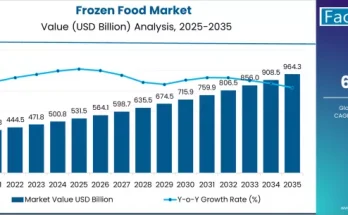Exploring the Global Basmati Rice Market
Basmati rice, known for its distinct aroma, elongated grains, and premium quality, occupies a special place in the global rice market. As consumer tastes evolve and demand for authentic, high-quality food grows, the basmati rice sector is emerging as a strong and resilient market. Recent industry research underscores a steady expansion driven by global culinary trends, sustainable farming practices, and the increasing sophistication of retail and foodservice channels.
What Is Driving the Market Growth?
Rising Demand for Premium and Aromatic Grains
One of the most significant factors fueling the basmati rice market is the growing consumer appetite for premium, aromatic rice varieties. As global food culture diversifies, applications such as gourmet restaurants, ethnic cuisine establishments, and home kitchens increasingly favor basmati thanks to its flavor, texture, and prestige. This shift is driven by a rising middle class in many regions, rising disposable incomes, and a stronger preference for authentic grain experiences.
Increasing Retail Consumption
A large share of basmati rice consumption is happening in the retail segment. Households purchasing for home cooking contribute heavily to demand, with basmati rice becoming a staple in many kitchens. Its reputation for elevating everyday meals, as well as special dish preparations, ensures that retail remains a dominant channel for this grain.
Origin Authenticity and Production Leadership
Basmati rice production is deeply rooted in traditional farming regions. The India-origin segment plays a particularly pivotal role, supporting quality and authenticity, which are key selling points. This origin-based appeal resonates strongly with consumers who care about provenance, grain quality, and heritage, helping producers build trust and premium positioning.
Health and Quality Consciousness
Modern consumers are not just looking for taste — they also want nutritional value and quality. Basmati rice is increasingly viewed as a premium grain that meets stringent quality expectations. Producers are responding with efforts to improve farming methods, enhance grain quality, and obtain certifications. This focus on quality assurance supports long-term value for buyers who are willing to pay more for reliable, high-grade basmati.
Innovation and Sustainable Cultivation
To meet growing demand, producers are innovating along multiple fronts. There is a shift toward more sustainable farming practices, including precision agriculture and eco-certification, to improve yield while reducing environmental impact. On the processing side, investment in value-added packaging, premium branding, and streamlined logistics is strengthening the supply chain. These developments help producers maintain the premium appeal of basmati rice even as volumes scale up.
Regional Dynamics and Global Reach
Asia-Pacific & Traditional Origin Regions
South Asia continues to anchor basmati production, with India being a dominant force. The region’s traditional cultivation methods and deep expertise support authenticity, which is highly valued in export markets. As consumer interest in origin-based quality intensifies, basmati-producing regions are investing in sustainable farming to safeguard both heritage and future growth.
North America and Europe
In Western markets, basmati rice has transitioned from being a niche ethnic grain to a premium mainstream product. Discerning consumers, especially those who enjoy global cuisine or emphasize quality ingredients, are increasingly choosing basmati. Retailers are responding by offering higher-quality, branded basmati in their shelves, while foodservice companies are leveraging its premium profile in upscale dining and fusion menus.
Emerging Markets
Emerging economies in Asia, the Middle East, and parts of Latin America are also driving basmati demand. Consumers in these regions are increasingly exposed to global cuisine, and as incomes rise, their demand for premium rice varieties like basmati grows. This expansion is supported by improving cold-chain infrastructure and more efficient trade channels, enabling basmati rice to reach further and more reliably.
Key Market Segments
Basmati rice can be segmented in several ways, each highlighting different demand dynamics:
- By Type: Traditional basmati vs. aged/IRRI basmati. Traditional basmati remains the core of the market due to its authenticity and long-standing consumer trust.
- By Application: Retail consumption (households) dominates, while foodservice (restaurants, catering) and industrial applications (rice processing) also contribute.
- By Origin: India-origin basmati remains the leader, underlining the importance of provenance in this premium rice category.
These segments help producers and marketers tailor their strategies — for example, focusing on high-premium aged basmati for gourmet foodservice, or emphasizing certified origin for retail buyers seeking heritage rice.
Challenges Facing the Market
Despite the strong growth story, the basmati rice market is not without challenges:
- Agricultural Risk: Basmati rice is vulnerable to climate variability. Traditional cultivation regions may face yield fluctuations due to changing weather patterns, which affects supply and quality.
- Quality Verification: As demand for premium basmati rises, so does the need for rigorous authenticity checks. Ensuring the grain truly originates from recognized basmati-growing zones is increasingly important.
- Competition: Basmati faces competition from other premium rice types as well as alternative grains. Brands must differentiate on quality, aroma, and origin to retain market share.
- Sustainability Costs: Implementing sustainable farming and certification systems can be expensive. Smaller farmers may struggle to adopt these practices without financial or technical support.
Future Outlook: Where the Market Is Headed
The basmati rice market is poised for continued, modest growth over the coming decade. Key themes that will shape its evolution include:
- Premiumization: As more consumers globally prioritize high-quality ingredients, premium basmati (especially aged and origin-certified varieties) will likely see increased adoption.
- Sustainability: Investment in eco-friendly and traceable farming practices will strengthen as buyers demand more transparency and ethical sourcing.
- Value-Added Products: There will be continued innovation around packaging (vacuum sealed, branded premium packaging), ready-to-cook basmati kits, and specialty basmati blends targeted at gourmet and health-conscious consumers.
- Export Expansion: Brands from basmati-producing regions will aim to expand their global footprint, supported by enhancements in logistics, grain quality systems, and marketing.
- Market Education: Educating consumers in new markets about the unique attributes of basmati — its aroma, elongation of grain, and culinary versatility — will be important to fuel further growth.
Conclusion
Basmati rice is much more than just another variety of rice — it is a premium, aromatic, and culturally rich grain that continues to capture global attention. Its unique combination of flavor, tradition, and quality makes it a compelling choice for both households and high-end foodservice. While there are challenges around sustainability, origin verification, and production risk, the overall outlook remains positive.
As consumer trends lean toward premium, authentic, and ethically sourced food, the basmati rice market is well-positioned to grow steadily. Producers who invest in sustainable cultivation, strong branding, and quality assurance will likely thrive, and markets that appreciate the true value of basmati will drive its expansion further into the global culinary mainstream.
Browse Full Report – https://www.factmr.com/report/2094/basmati-rice-market



